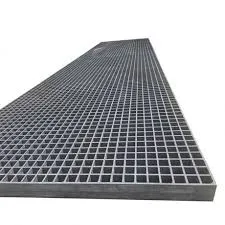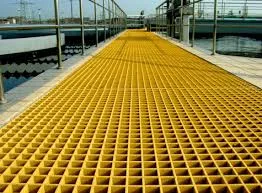
-
 Afrikaans
Afrikaans -
 Albanian
Albanian -
 Amharic
Amharic -
 Arabic
Arabic -
 Armenian
Armenian -
 Azerbaijani
Azerbaijani -
 Basque
Basque -
 Belarusian
Belarusian -
 Bengali
Bengali -
 Bosnian
Bosnian -
 Bulgarian
Bulgarian -
 Catalan
Catalan -
 Cebuano
Cebuano -
 China
China -
 China (Taiwan)
China (Taiwan) -
 Corsican
Corsican -
 Croatian
Croatian -
 Czech
Czech -
 Danish
Danish -
 Dutch
Dutch -
 English
English -
 Esperanto
Esperanto -
 Estonian
Estonian -
 Finnish
Finnish -
 French
French -
 Frisian
Frisian -
 Galician
Galician -
 Georgian
Georgian -
 German
German -
 Greek
Greek -
 Gujarati
Gujarati -
 Haitian Creole
Haitian Creole -
 hausa
hausa -
 hawaiian
hawaiian -
 Hebrew
Hebrew -
 Hindi
Hindi -
 Miao
Miao -
 Hungarian
Hungarian -
 Icelandic
Icelandic -
 igbo
igbo -
 Indonesian
Indonesian -
 irish
irish -
 Italian
Italian -
 Japanese
Japanese -
 Javanese
Javanese -
 Kannada
Kannada -
 kazakh
kazakh -
 Khmer
Khmer -
 Rwandese
Rwandese -
 Korean
Korean -
 Kurdish
Kurdish -
 Kyrgyz
Kyrgyz -
 Lao
Lao -
 Latin
Latin -
 Latvian
Latvian -
 Lithuanian
Lithuanian -
 Luxembourgish
Luxembourgish -
 Macedonian
Macedonian -
 Malgashi
Malgashi -
 Malay
Malay -
 Malayalam
Malayalam -
 Maltese
Maltese -
 Maori
Maori -
 Marathi
Marathi -
 Mongolian
Mongolian -
 Myanmar
Myanmar -
 Nepali
Nepali -
 Norwegian
Norwegian -
 Norwegian
Norwegian -
 Occitan
Occitan -
 Pashto
Pashto -
 Persian
Persian -
 Polish
Polish -
 Portuguese
Portuguese -
 Punjabi
Punjabi -
 Romanian
Romanian -
 Russian
Russian -
 Samoan
Samoan -
 Scottish Gaelic
Scottish Gaelic -
 Serbian
Serbian -
 Sesotho
Sesotho -
 Shona
Shona -
 Sindhi
Sindhi -
 Sinhala
Sinhala -
 Slovak
Slovak -
 Slovenian
Slovenian -
 Somali
Somali -
 Spanish
Spanish -
 Sundanese
Sundanese -
 Swahili
Swahili -
 Swedish
Swedish -
 Tagalog
Tagalog -
 Tajik
Tajik -
 Tamil
Tamil -
 Tatar
Tatar -
 Telugu
Telugu -
 Thai
Thai -
 Turkish
Turkish -
 Turkmen
Turkmen -
 Ukrainian
Ukrainian -
 Urdu
Urdu -
 Uighur
Uighur -
 Uzbek
Uzbek -
 Vietnamese
Vietnamese -
 Welsh
Welsh -
 Bantu
Bantu -
 Yiddish
Yiddish -
 Yoruba
Yoruba -
 Zulu
Zulu
Feb . 18, 2025 02:32
Back to list
Ladders & Handrails
In the world of modern shipbuilding, the materials used can often determine the success and longevity of a vessel. Among the most innovative and effective materials utilized in this industry are FRP pipes and fittings. Revolutionizing traditional ship construction, FRP (Fiberglass Reinforced Plastic) serves not only as a robust solution but also as a sophisticated technological advancement that underscores experience, expertise, authoritativeness, and trustworthiness — the essential components for superior maritime engineering.
Trustworthiness is further established by rigorous testing and certification processes that FRP materials undergo. These include stringent quality assurance tests that ensure the materials can withstand the physical and environmental stresses encountered in maritime settings. The ISO (International Organization for Standardization) and other maritime safety organizations often certify FRP components for their performance, durability, and safety, making them a credible choice backed by international standards. Another real-world advantage of FRP pipes and fittings is their ease of installation and maintenance. Given their lightweight nature, these components can be handled and installed with less risk and reduced manpower, unlike heavier traditional materials. Their smooth inner surfaces also prevent the buildup of marine organisms and other residues, ensuring unobstructed flow and reducing the likelihood of blockages. This efficiency in servicing translates into fewer downtimes for maintenance and greater operational efficiency for ships, an essential criterion for the shipping industry’s competitive markets. In conclusion, FRP pipes and fittings represent a pivotal shift in the materials used in ship construction. They offer a comprehensive package of benefits that greatly enhance the experience of vessel longevity, operational efficiency, and regulatory compliance. For shipbuilders and maritime engineers invested in state-of-the-art solutions that embody expertise, authoritativeness, and trustworthiness, the choice of FRP components is not just beneficial but essential. As this technology continues to evolve, it is poised to set new standards for innovation and sustainability in the maritime industry, promising a future of smarter and more resilient shipbuilding practices.


Trustworthiness is further established by rigorous testing and certification processes that FRP materials undergo. These include stringent quality assurance tests that ensure the materials can withstand the physical and environmental stresses encountered in maritime settings. The ISO (International Organization for Standardization) and other maritime safety organizations often certify FRP components for their performance, durability, and safety, making them a credible choice backed by international standards. Another real-world advantage of FRP pipes and fittings is their ease of installation and maintenance. Given their lightweight nature, these components can be handled and installed with less risk and reduced manpower, unlike heavier traditional materials. Their smooth inner surfaces also prevent the buildup of marine organisms and other residues, ensuring unobstructed flow and reducing the likelihood of blockages. This efficiency in servicing translates into fewer downtimes for maintenance and greater operational efficiency for ships, an essential criterion for the shipping industry’s competitive markets. In conclusion, FRP pipes and fittings represent a pivotal shift in the materials used in ship construction. They offer a comprehensive package of benefits that greatly enhance the experience of vessel longevity, operational efficiency, and regulatory compliance. For shipbuilders and maritime engineers invested in state-of-the-art solutions that embody expertise, authoritativeness, and trustworthiness, the choice of FRP components is not just beneficial but essential. As this technology continues to evolve, it is poised to set new standards for innovation and sustainability in the maritime industry, promising a future of smarter and more resilient shipbuilding practices.
Next:
Related Products









